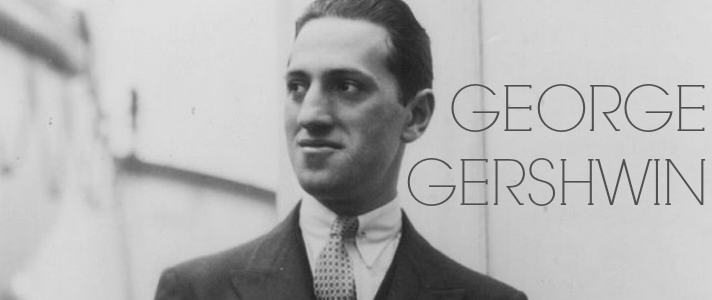We introduced you to composer George Gershwin in an earlier post and now we would like to share some information on one of his most notable compositions – Rhapsody in Blue.
The Composition
In 1923, Paul Whiteman asked George Gershwin to write a jazz piece for his band but Gershwin did not take this request seriously until an article appeared in the New York Tribune on Jan 4, 1924, announcing that he was working on a “jazz concerto” to be premiered by the Whiteman Band at Aeolian Hall in New York.
The Premier
February 12, 1924, “Rhapsody in Blue” was premiered by Paul Whiteman and his Palais Royal Orchestra. Inspired by the rattle of the Boston train and James McNeill Whistler’s painting “Nocturne in Black and Gold,” “Rhapsody in Blue” earned him over $250,000 during the Great Depression.
The performance of “Rhapsody in Blue” was the first that Gershwin would make as a concert pianist performing his own work. “Rhapsody in Blue” was composed in a week’s time. Its style is an assimilation of European and jazz styles with a slight blues appeal.
The release of the piece had mixed reviews from serious music critics and the general public. “Serious music critics were often at a loss as to where to place Gershwin’s classical music in the standard repertoire. Some dismissed his work as banal and tiresome, but it always found favor with the general public.” (PBS, 1) Rhapsody, however, was the work that defined his career and elevated him to a level of greatness he had not before attained.
Due to public popularity, the entire concert was repeated multiple times. Then, in a play, “The Vortex,” Rhapsody was introduced to England which soon demanded the piece.
The Piece
The piece is known for its opening glissando; the playing of a chromatic scale from the designated first note to the second note in the time allowed. During its premier, Ross Gorman played this on clarinet. The music is compared to high wire balancing with various city sounds. There is a variation of “Rhapsody in Blue” because some segments were too difficult and therefore omitted in its publication. The omitted portions were later discovered and reinserted by Alicia Zizzo, a pianist and composer. “Rhapsody in Blue” combined classical and jazz styles. It was originally written for piano, but was arranged for piano and jazz band later.
After the composition of “Rhapsody in Blue,” other musicians began to take Gershwin more seriously as a musician and composer. The complexity and genius that went into the composition of the piece, especially when considering it was written in under a week, is incredible.
[template id=”182″]
